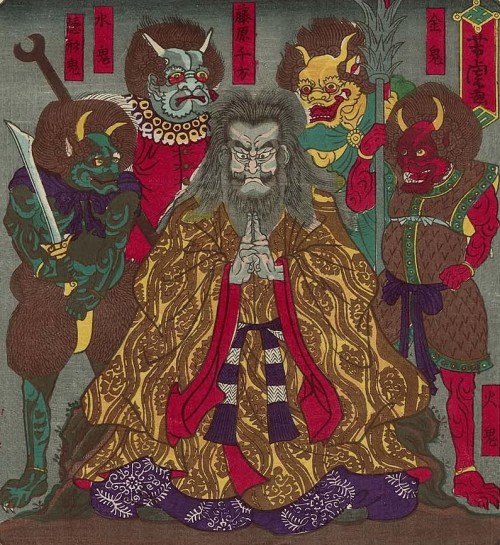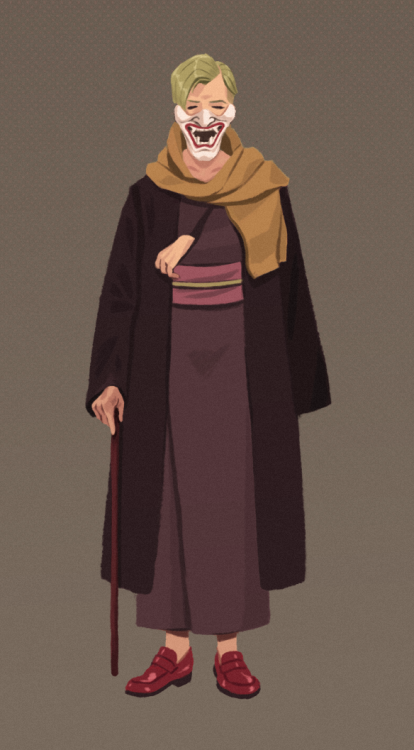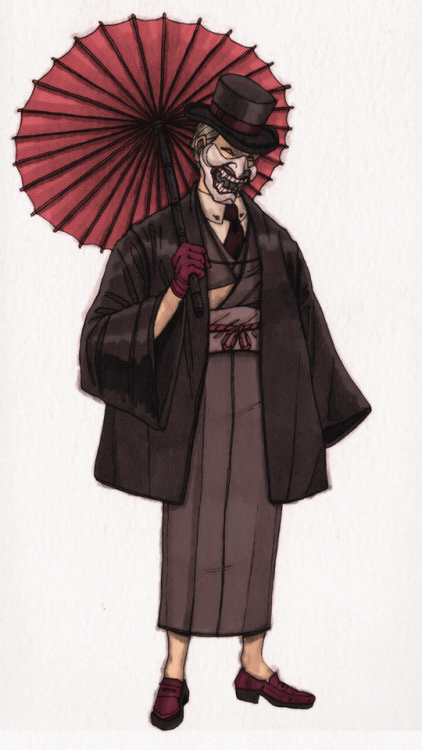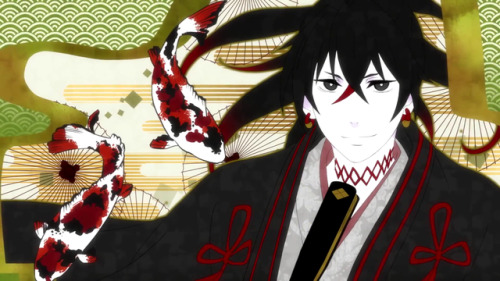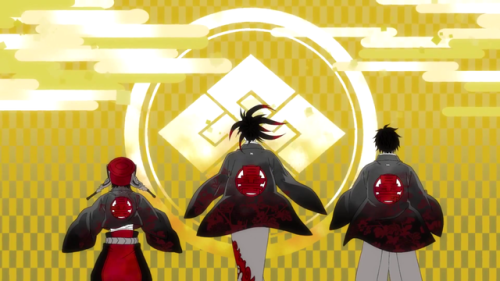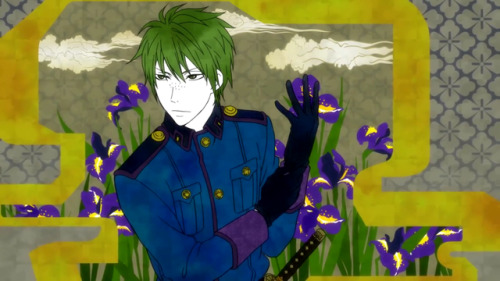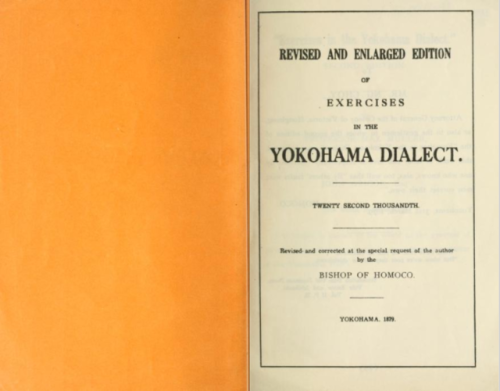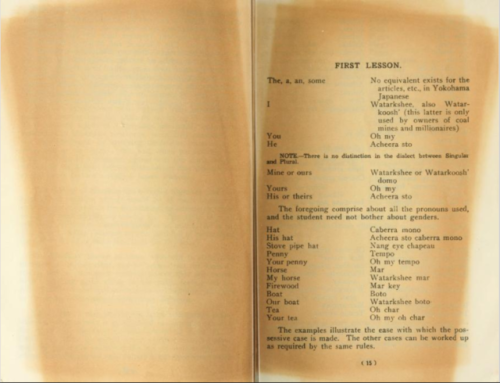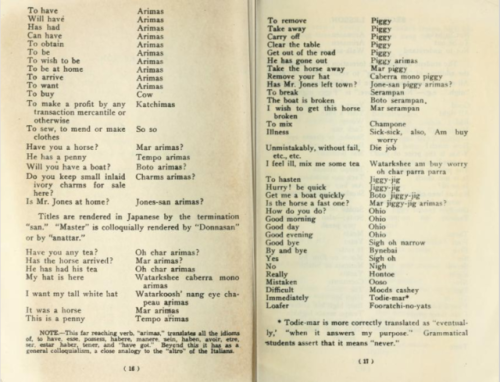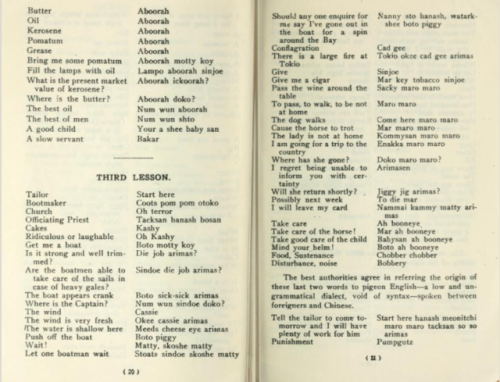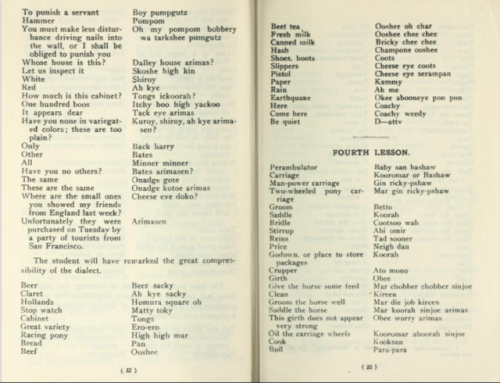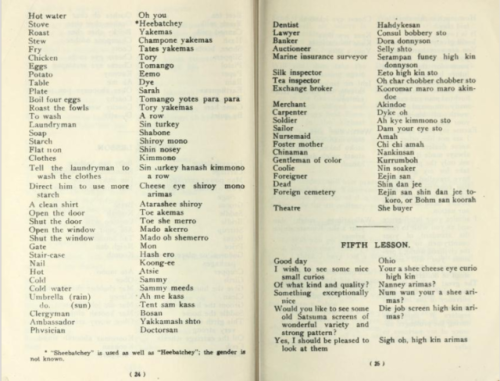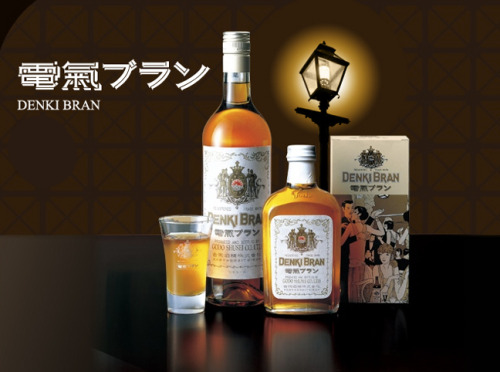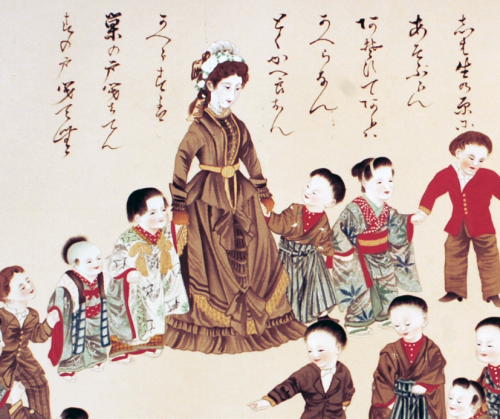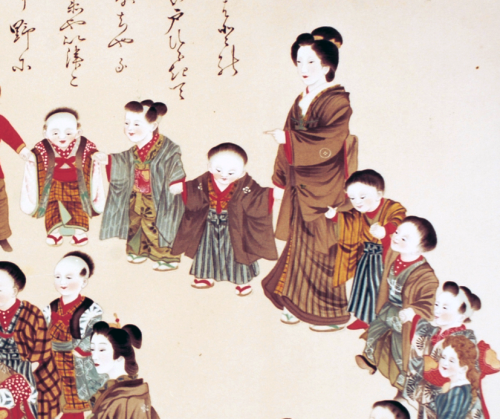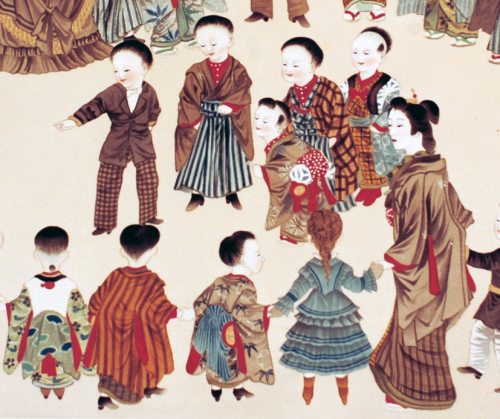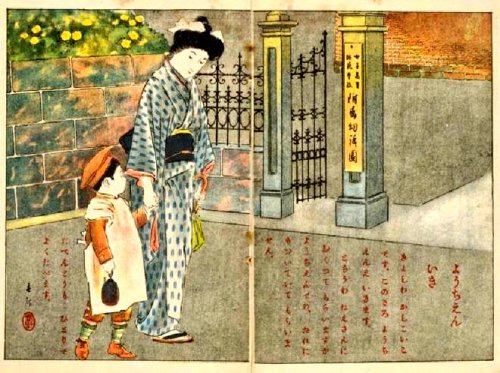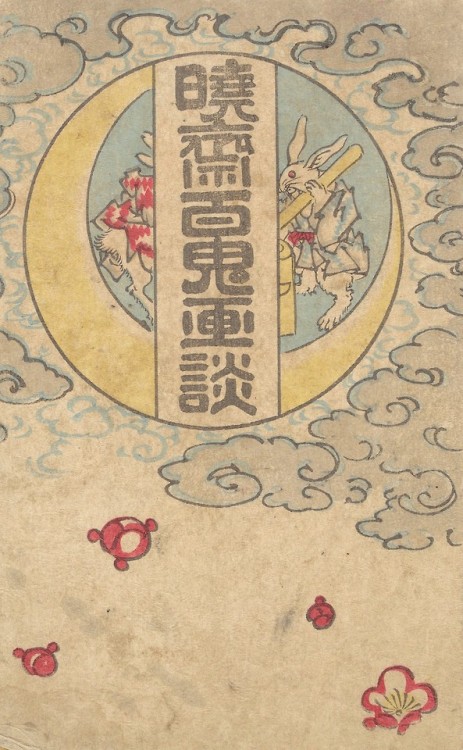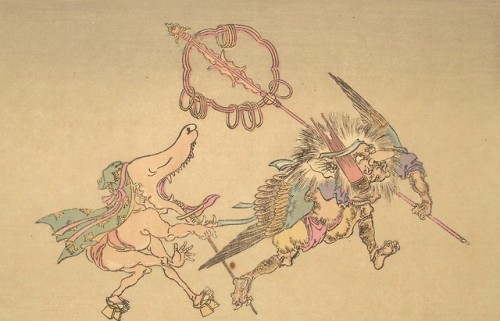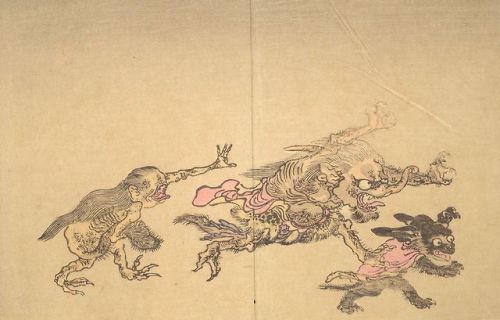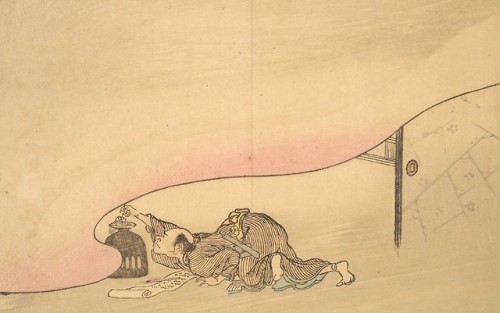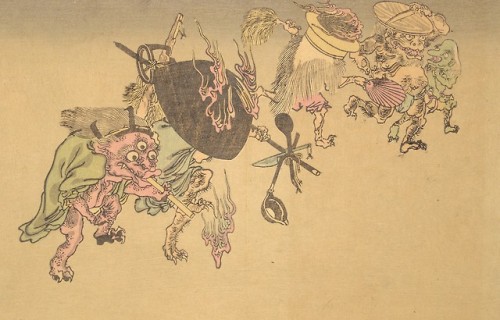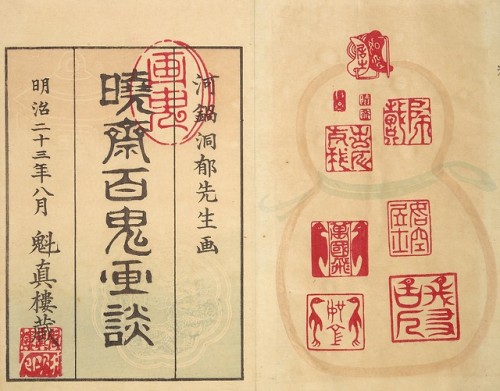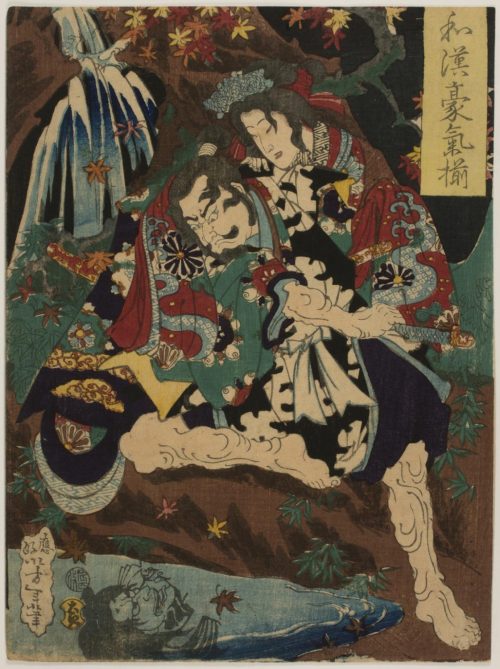#meiji period
“Kiyoshi Hikariin” (1876), Toyohara Kunichika (1835-1900)
Print from the series “Thirty-six Good and Evil Beauties”
The princess Kiyoshi Hikariin draws her sword in order to avenge herself. The folding screen behind her is decorated with the mon (crest) of the powerful Tokugawa family, who ruled the shogunate during the Edo period.
Post link
Tsuchiyama in Ômi Province: The Sorcery of Chikata; Fujiwara Chikata and Demons, from the series Calligraphy and Pictures for the Fifty-three Stations of the Tôkaidô by Utagawa Yoshitora (1872)
Post link
Laughing Under the Clouds’ different endings. Donten ni Warau is a gorgeous anime with an amazing cast of characters.
Post link
Kawabata Gyokusho (1842-1913), “Traveling by Moonlight”. Ink and color, 1800s, Meiji Period, MET.
Post link
Excerpts from a Yokohama dialect Japanese phrasebook in the 1800s
Bishop of Homoco
Yokohama, 1879
Post link
電気ブラン
Denki Bran
Denki Bran is a brandy cocktail drink that was created in the Kamiya Bar of Asakusa, Tokyo in the 1890s. The word “denki” means electricity, and “bran” stood for “brandy”.
During the Meiji era when electricity was still considered a rarity, many electric novelties were called “denki (something)”. At that time, imported Western-style goods were considered stylish and attracted people’s attention. Hence the decision to name the drink “Denki Bran”.
Post link
Shōki Creeping up on a Sleeping Demon
From the series Sketches by Yoshitoshi (Yoshitoshi ryakuga)
Tsukioka Yoshitoshi, Japanese, 1839 - 1892. Published by Funazu Chūjirō.
Made in Japan, Meiji Period (1868-1912)
1880s
Color woodcut
Philadelphia Museum of Art
Post link
Taira no Koremochi and Demon, from the series Valor in China and Japan (Wakan gōki zoroi)
Tsukioka Yoshitoshi, Japanese, 1839 - 1892. Engraved by Hori Ushi. Published by Daisada.
Made in Japan, Edo Period (1615-1868) or Meiji Period (1868-1912)
1868
Color woodcut
Philadelphia Museum of Art
Post link


